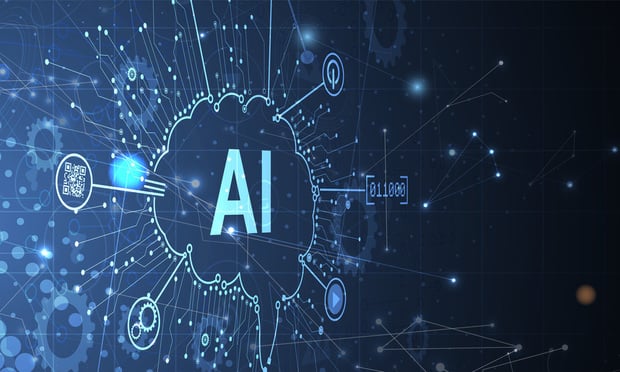Law.com Subscribers SAVE 30%
Call 855-808-4530 or email [email protected] to receive your discount on a new subscription.
Cyber Insurance Experiencing Future Shock
The idea of "Future Shock "— that an accelerated pace of change causes social and psychological disruptions — dates from Alvin Toffler's 1970 book of the same name. As it copes with the mutable nature of cyber risks, the Insurance industry is experiencing such a shock. Insurers who write cyber liability policies are well-equipped to manage such claims, but what about carriers and adjusters who face such claims under more traditional policies — also known as "Silent Cyber?" This article aims to help non-cyber risk adjusters who may have to oversee such a claim.
Expanding Liability
Recent court decisions show how a cyber claim can arise under a traditional policy:
- A Maryland federal district court determined that a ransomware attack — and the insured's attempts to remedy that attack — caused "direct physical loss or damage" to the insured's computer system by slowing the system and making it less useful. The carrier argued that the critical issue was whether the software or data had been damaged, and that both were intangible. The court reasoned that the business owner's policy listed among covered items "data stored" on physical media, including software. Thus, the policy contemplated that these things could experience direct physical loss or damage. Nat'l Ink and Stitch, LLC v. State Auto Prop. and Cas. Ins. Co., 435 F.Supp.3d 679 (D. Md. 2020).
- Under a similar policy, Ohio's Court of Appeals determined that the encryption of a company's data — when hackers locked the data after gaining access to the company's systems — may fall within the definition of "direct physical damage." The court noted that in addition to damage to data and media, the attack resulted in the company's phone system being completely unworkable. EMO Servs., LLC v. Owners Ins. Co., 2021 Ohio App. LEXIS 3849. The Supreme Court of Ohio has accepted review.
- A company that operated restaurants, hotels, and casinos suffered a data breach which led to the loss of customer credit card data. A credit card processor sued the company after a data breach seeking to recover $20,000,000 in assessments from MasterCard. The company in sough coverage from its insurer under a commercial general liability policy. The United States Court of Appeals for the 5th Circuit Court found that the retail company's loss of the data was a "publication" of that information that triggered "personal and advertising injury" coverage. The insurer had to defend the case against the retail company because the complaint alleged that the breach had exposed consumer data and violated the right of the consumers to keep credit card data private. Landry's, Inc. v. Ins. Co. of the Pa., 4 F.4th 366 (5th Cir. 2021).
- The most recent example comes from the court that reversed itself. Target's 2013 breach led to $138 million in losses, including $74 million to replace credit cards that were compromised. After finding no coverage in a 2021 ruling, the court changed its mind in March 2022, ruling that the loss of use of the compromised cards had occurred to "tangible property that is not physically injured." Target Corp. v. Ace Am. Ins. Co., 19-cv-2916 (WMW/DTS), 2022 U.S. Dist. LEXIS 51044 (D. Minn. Mar. 22, 2022).
What Makes Cyber Claims So Difficult?
As the cases above show, cyber claims can have huge stakes. This has caused insurers to try to clarify when such losses are covered. They have tried to exclude cyber liability from traditional policies for more than a decade, seeking to push coverage for such claims towards cyber-insurance policies. But this is where the Future Shock comes; insurers cannot write new policy language as quickly as hackers change their tactics. Freeman Mathis & Gary partner Jonathan Schwartz pointed this out in a recent interview with Law 360: While insurers are "writing a policy and accepting premium based on the risk that they're assuming," the criminals' changing tactics force courts to apply policies that may not be tailored to the new circumstances. This is how adjusters who handle claims under traditional policies may find themselves adjusting what seems like a cyber loss.
This premium content is locked for Entertainment Law & Finance subscribers only
ENJOY UNLIMITED ACCESS TO THE SINGLE SOURCE OF OBJECTIVE LEGAL ANALYSIS, PRACTICAL INSIGHTS, AND NEWS IN ENTERTAINMENT LAW.
- Stay current on the latest information, rulings, regulations, and trends
- Includes practical, must-have information on copyrights, royalties, AI, and more
- Tap into expert guidance from top entertainment lawyers and experts
Already a have an account? Sign In Now Log In Now
For enterprise-wide or corporate acess, please contact Customer Service at [email protected] or 877-256-2473

New York's Latest Cybersecurity Commitment
On Aug. 9, 2023, Gov. Kathy Hochul introduced New York's inaugural comprehensive cybersecurity strategy. In sum, the plan aims to update government networks, bolster county-level digital defenses, and regulate critical infrastructure.

The DOJ's Corporate Enforcement Policy: One Year Later
The DOJ's Criminal Division issued three declinations since the issuance of the revised CEP a year ago. Review of these cases gives insight into DOJ's implementation of the new policy in practice.

How AI Has Affected PR
When we consider how the use of AI affects legal PR and communications, we have to look at it as an industrywide global phenomenon. A recent online conference provided an overview of the latest AI trends in public relations, and specifically, the impact of AI on communications. Here are some of the key points and takeaways from several of the speakers, who provided current best practices, tips, concerns and case studies.

CLE Shouldn't Be the Only Mandatory Training for Attorneys
Each stage of an attorney's career offers opportunities for a curriculum that addresses both the individual's and the firm's need to drive success.


